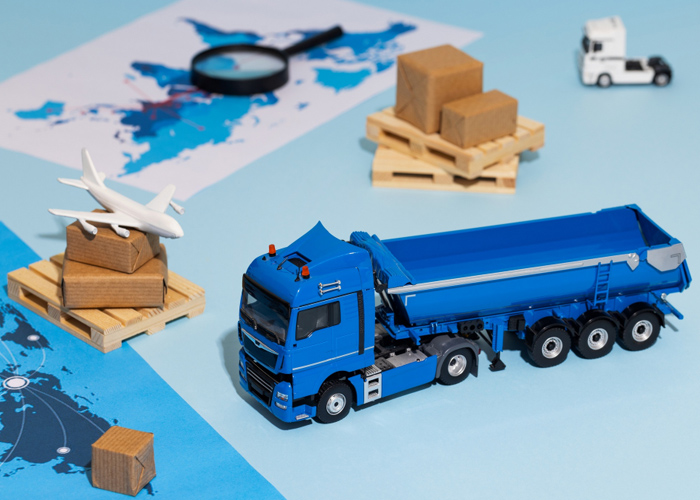Garment Manufacturing Challenges in 2025: Navigating Automation, Sustainability, and Supply Chain Disruptions

Table of Contents
Toggle2025 Garment Manufacturing Challenges: Issues to Explain
The garment manufacturing industry has undergone significant changes in recent years, driven by advancements in technology, shifts in consumer demands, and global economic trends. As we step into 2023, the industry faces a unique set of challenges that require innovative solutions. In this article, we will explore the key hurdles and obstacles that garment manufacturers must navigate to thrive in this rapidly evolving landscape.
I. Automation and Workforce Transition
A. Increased Implementation of Automation:
Robotics and AI in Production Lines:
As we enter 2025, garment manufacturers are increasingly turning to robotics and artificial intelligence (AI) to automate various stages of the production process. Robots can handle repetitive tasks with precision and efficiency, leading to increased productivity and reduced labor costs. AI-powered systems can optimize production schedules, predict demand patterns, and enhance quality control.
Advantages of Automation in Garment Manufacturing:
Enhanced Efficiency: Automation minimizes the need for manual intervention, reducing the time required for production and improving overall operational efficiency.
Improved Quality: Automated systems ensure consistent and precise production, resulting in higher-quality garments with fewer defects.
Cost Reduction: Although the initial investment in automation can be significant, the long-term cost savings from reduced labor and improved productivity make it a worthwhile investment.
B. Job Displacement and Reskilling Efforts:
Impact on Blue-Collar Workers:
The implementation of automation in garment manufacturing may lead to concerns about job displacement among blue-collar workers. As machines take over certain tasks, there might be a decrease in the demand for traditional manufacturing roles, leading to potential job losses.
Strategies for Workforce Transition and Training:
To address the workforce transition, garment manufacturers must invest in reskilling and upskilling programs for their employees. These programs can equip workers with the skills needed to operate and maintain automated systems, as well as provide opportunities to shift to more specialized roles in areas such as design, data analysis, or quality assurance.
II. Sustainable Practices and Circular Economy
A. Growing Demand for Sustainable Fashion:
Rise of Eco-conscious Consumers:
In 2025, consumers are increasingly concerned about the environmental impact of the fashion industry. They are actively seeking sustainable and eco-friendly products, leading to a surge in demand for ethically produced and environmentally friendly garments.
Green Initiatives by Fashion Brands:
Many fashion brands are proactively adopting sustainable practices in response to consumer demand. This includes using organic and recycled materials, reducing water consumption during production, and committing to ethical sourcing and fair labor practices.

B. Challenges in Adopting Sustainable Practices:
Sourcing Environmentally Friendly Materials:
Finding reliable and sustainable sources for eco-friendly materials can be challenging. While there is a growing market for such materials, their availability and cost-effectiveness can still be limited.
Implementing Eco-friendly Production Techniques:
Integrating sustainable practices throughout the entire production process requires significant changes in the manufacturing infrastructure. Implementing eco-friendly production techniques may demand additional investment and alterations to existing machinery and processes.
C. Circular Economy in Garment Manufacturing:
Recycling and Upcycling:
In the pursuit of sustainability, garment manufacturers are exploring circular economy models, where garments are recycled or upcycled to extend their lifespan. Recycling allows old garments to be transformed into new ones, reducing waste and conserving resources.
Extended Producer Responsibility (EPR) in Fashion:
Extended Producer Responsibility schemes require manufacturers to take responsibility for their products throughout their lifecycle, including post-consumer stages. This encourages garment manufacturers to design products with recyclability in mind, reducing the environmental impact.
III. Supply Chain Disruptions and Resilience
A. Global Events and Pandemics:
COVID-19 Impact on Garment Manufacturing:
The COVID-19 pandemic exposed vulnerabilities in global supply chains, disrupting raw material sourcing, production, and distribution. Garment manufacturers faced unprecedented challenges in managing workforce safety, logistics, and fluctuating demand.
Strategies for Building Supply Chain Resilience:
To build resilience against future disruptions, garment manufacturers must diversify their suppliers and explore local sourcing options. Investing in technology for real-time monitoring and data analytics can help in predicting and mitigating supply chain disruptions.

B. Geopolitical Uncertainty:
Trade Wars and Tariffs:
Political and economic tensions between countries can result in trade wars and tariffs, impacting the flow of goods and materials across borders. Such uncertainties can disrupt supply chains and lead to higher costs.
Diversification of Suppliers and Markets:
To reduce dependency on specific regions and markets, garment manufacturers should diversify their supplier base and explore opportunities in emerging markets. This approach can help mitigate the impact of geopolitical shifts on their business operations.
IV. Digital Transformation and Industry 4.0

A. Integration of Digital Technologies:
Internet of Things (IoT) in Garment Manufacturing:
The Internet of Things (IoT) is revolutionizing the garment industry by connecting smart devices and machinery to a network, enabling real-time monitoring and data collection. IoT applications can optimize production processes, improve inventory management, and enhance quality control.
Data Analytics for Supply Chain Optimization:
Garment manufacturers are leveraging big data analytics to gain insights into consumer preferences, market trends, and supply chain performance. Data-driven decision-making helps optimize inventory levels, forecast demand accurately, and streamline production.
B. Cybersecurity Concerns:
Protecting Intellectual Property:
Digital transformation exposes garment manufacturers to potential cybersecurity threats, such as data breaches and intellectual property theft. Protecting proprietary designs and sensitive information becomes paramount in the digital age.
Securing Sensitive Customer Data:
With the increasing use of e-commerce and online platforms, garment manufacturers need robust cybersecurity measures to safeguard customer data. Data privacy and protection are critical to maintain consumer trust and comply with data regulations.

V. Fast Fashion and Short Production Cycles
A. Fast Fashion’s Environmental Impact:
Overconsumption and Waste Generation:
Fast fashion’s focus on quick production and low prices encourages consumers to buy more and discard garments quickly, leading to a considerable environmental impact from waste generation.
Addressing the Disposable Culture:
To combat the environmental consequences of fast fashion, manufacturers must promote sustainable practices, encourage conscious consumption, and design products with longevity in mind.
B. Reducing Time-to-Market:
Agile Manufacturing and Lean Principles:
Adopting agile manufacturing processes and lean principles can help garment manufacturers reduce time-to-market, respond quickly to changing trends, and minimize overproduction.
Real-time Inventory Management Solutions:
Utilizing real-time inventory management systems allows manufacturers to track inventory levels, optimize production schedules, and respond promptly to fluctuations in demand.
VI. Compliance and Ethical Practices
A. Labor Rights and Fair Wages:
Upholding Worker’s Rights in Supply Chains:
Garment manufacturers must ensure that labor rights are respected throughout their supply chains, addressing issues such as child labor, forced labor, and unsafe working conditions.

Certification and Auditing Programs:
Participating in certification programs, such as Fair Trade or WRAP (Worldwide Responsible Accredited Production), and conducting regular audits can help validate ethical practices and demonstrate commitment to fair treatment of workers.
B. Counterfeit and Intellectual Property Infringement:
Protecting Brands from Counterfeiting:
Counterfeit products can harm a brand’s reputation and revenue. Garment manufacturers should implement measures such as holographic labels, QR codes, and RFID tags to authenticate their products.
Enforcing Copyright and Trademark Laws:
Garment manufacturers must be vigilant in protecting their designs and trademarks through legal means, including pursuing legal action against counterfeiters and unauthorized use of their intellectual property.
VII. Rising Costs of Raw Materials and Production
A. Fluctuating Prices of Cotton and Other Inputs:
Impact of Climate Change on Agriculture:
Climate change can disrupt agricultural production and lead to fluctuations in the prices of raw materials like cotton. Garment manufacturers must adapt to these changes and consider alternative fibers with lower environmental impacts.
Alternative Fibers and Material Innovations:
Exploring sustainable alternatives to traditional materials, such as recycled polyester, hemp, and bamboo, can help reduce dependency on limited resources and mitigate price fluctuations.
B. Balancing Quality and Cost Efficiency:
Ensuring Product Quality Amid Cost-cutting Efforts:
While cost efficiency is essential, garment manufacturers must maintain the quality of their products to meet consumer expectations. Cutting corners on quality can lead to customer dissatisfaction and harm brand reputation.
Adopting Sustainable Cost Management Strategies:
Sustainable cost management involves optimizing resource utilization, reducing waste, and implementing energy-efficient practices. Balancing financial considerations with environmental and social responsibilities is key to long-term success.

Challenges Faced by Arbish Sports
The garment manufacturing industry is facing a complex and rapidly changing landscape in 2025, and Arbish Sports, a leading garment manufacturer from Sialkot, Pakistan, operating since 2006, is no exception. The company faces numerous challenges, including automation, sustainable practices, supply chain disruptions, digital transformation, fast fashion, compliance, and rising costs.
Arbish Sports’ Solutions for a Resilient Future
To overcome these hurdles, Arbish Sports has adopted innovative solutions, responsible practices, and an adaptable approach to remain competitive. By embracing these strategies, the company is contributing to a more sustainable, resilient, and prosperous future for the fashion world.
- Facebook
- Twitter
- Linkedin
- Whatsapp





